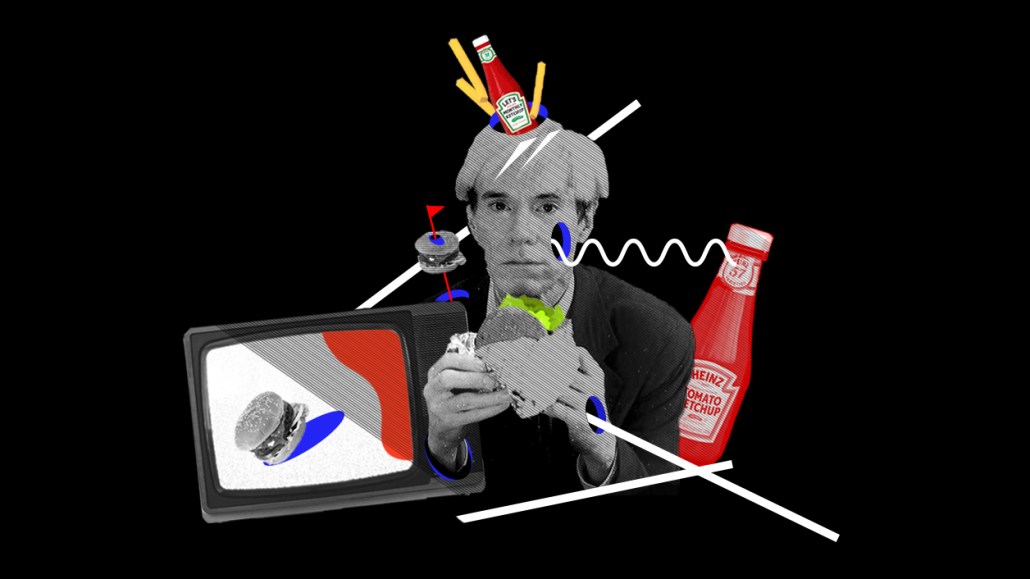Save 50% on a 3-month Digiday+ membership. Ends Dec 5.

By Eoin Townsend, chief product officer at Cadent
The traditional TV advertising and digital advertising worlds are merging, and it’s a pivotal moment for the TV industry. For years TV equalled positive brand associations and mass awareness. A classic example is Procter & Gamble’s “Thank You, Mom” spots that aired during the Olympics – the goal was to reach huge swathes of the population with a unifying, emotionally resonant message.
TV is still incredibly effective at achieving broad awareness. Burger King’s Andy Warhol Super Bowl spot, for example, boosted purchase consideration among viewers by 8 percent and increased positive buzz by 20 percent among 18 to 34-year-olds.
That level of awareness isn’t going anywhere, but TV is evolving and changing how marketers think about their customers’ path to purchase. The catalyst is Addressable TV, which is changing the landscape for marketers, consumers and media owners.
To put it simply, Addressable TV advertising uses the same datasets as digital media so marketers can reach audiences at scale. Being able to use TV in this way, particularly in an increasingly fragmented landscape, means marketers can engage their customers like never before.
It’s about making connections between the data that exists in digital and applying it to a traditional media channel. In a noisy media environment, addressable TV advertising is becoming a proven part of the media mix, connecting marketers to the households they want to reach. For instance, a marketer for a luxury brand can use traditional TV to create awareness through aspirational creative. But with advanced TV they can also reach those households who bought a competitor’s products or who lapsed in purchasing and could be influenced while they’re in the consideration phase of their journey.
Through TV, marketers will be able to engage customers throughout their entire journey to purchase and create more impactful, integrated campaigns. As technology has transformed the relationship a brand can have with its consumer on TV, it has also changed the way television can influence consumers. Today TV is data-driven and targeted, it can refresh and reinforce messages to specific segments, foster loyalty and advocacy, educate during the research phase and sell products.
Ad position: web_incontent_pos1
Addressable TV enables advertisers to reach consumers on the screen in their home at the same moment they are researching and setting their buying criteria. This creates an opportunity for true cross-screen interaction and measurement. Marketers will only reach households that matter most, at the relevant moment.
The media provider and consumer relationship will change too. The introduction of addressable TV advertising provides both opportunities and challenges for the media side of the business, which has resulted in a thoughtfully considered process for TV’s evolution, not a revolution. It creates the ability for media companies to understand their customers in a way that wasn’t possible before and enables media owners to create more value for their advertiser clients and their end customers, driving revenue and ROI.
Consumers, who have an incredible array of choice in subscription models and content, will expect relevant ad experiences unified across all their interactions. And through relevant messaging, excellent creative that resonates with the audience and great brand experiences, that customer will be more likely to buy again.
Like any new medium, there will be a lag in adoption. EMarketer predicts $2.54 billion will be spent on US addressable TV ads this year, accounting for just 3.7 percent of total TV ad spend. Yet an ANA and Forrester survey found just 15 percent of respondents regularly include addressable TV in their media plans.
The transformation of traditional TV will fundamentally change the dynamics of the TV industry for advertisers, media owners and consumers. And the pace of change will only increase. How we navigate that change has to respect the success and values of the traditional TV landscape with the capabilities of the digital ecosystem. As TV simultaneously becomes more data-enabled and fragmented, aggregation, automation and attribution at scale are the ways to solve it. Old and new must work together.
Ad position: web_incontent_pos2
At this juncture, TV is about bringing in both the old and the new together at scale. Linear, large-scale TV campaigns work and addressable campaigns work, but they work even better used together and improve the efficacy of both.
More from Digiday

Ulta, Best Buy and Adidas dominate AI holiday shopping mentions
The brands that are seeing the biggest boost from this shift in consumer behavior are some of the biggest retailers.

Digiday+ Research Subscription Index 2025: Subscription strategies from Bloomberg, The New York Times, Vox and others
Digiday’s third annual Subscription Index examines and measures publishers’ subscription strategies to identify common approaches and key tactics among Bloomberg, The New York Times, Vox and others.

U.K. retailer Boots leads brand efforts to invest in ad creative’s data layer
For media dollars to make an impact, brands need ad creative that actually hits. More CMOs are investing in pre- and post-flight measurement.
Ad position: web_bfu